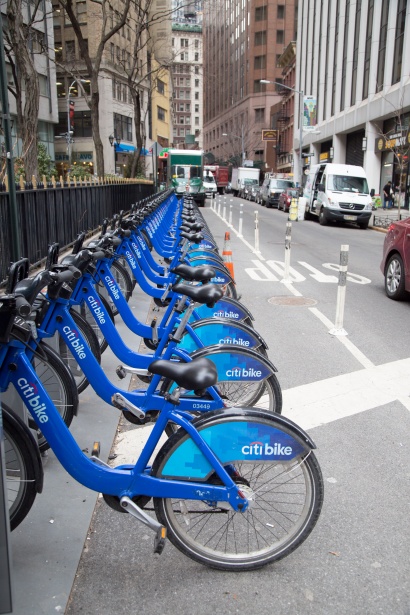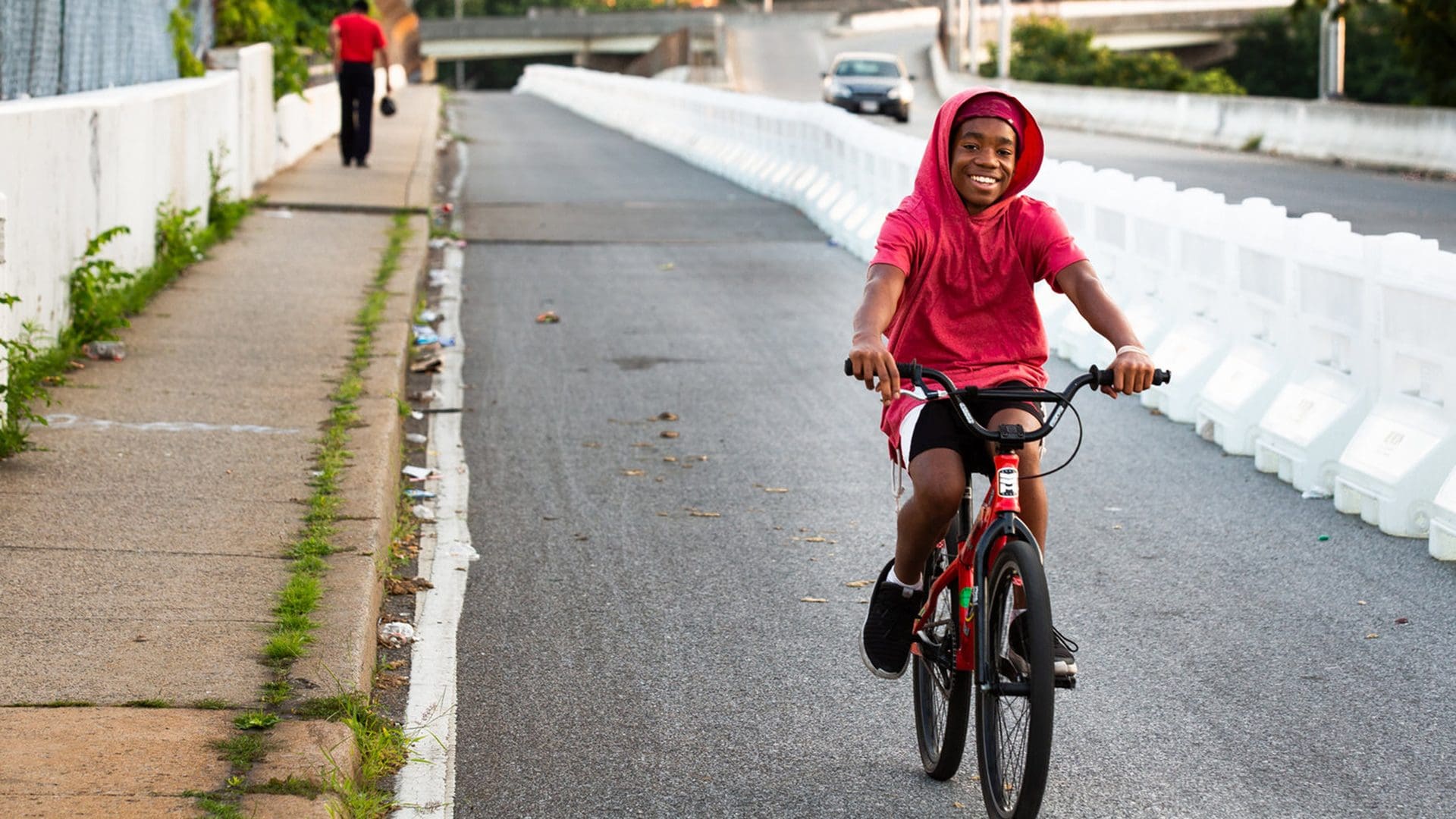April 16, 2019
Every weekday morning in Seattle, a programmer drives a Car2Go from her neighborhood to a light rail station. In Baltimore, a graphic designer uses a Bird scooter to get from his front door to a water taxi. Meanwhile, in underserved communities around North America, thousands of workers walk a mile or more in unsafe traveling conditions to wait for a bus to finish their commutes.
Inadequate transportation systems cause many ills, which are felt most acutely in low-income communities where fewer residents have access to a personal automobile. People who can’t afford a car, or are simply unable to drive, travel significant distances to access any public transit option that can help them reach their destinations.
Long commutes and unreliable access to work, family, and social support systems lead to poor quality of life and negative social outcomes. This is particularly true for people living in lower-income neighborhoods, where missed transit connections and lengthy travel times limit access to job opportunities, affordable childcare, healthcare, and other basic services.
For example, a survey of low-income patients found those who rode the bus were twice as likely to miss appointments compared to patients with access to a vehicle. A recent study found ambulance calls drop by an average of 7 percent after ride-sharing providers enter the marketplace, suggesting that ambulances are sometimes called in response to a patient’s lack of a better transportation option.
In low income areas, these challenges tend to stack on top of one another and large public investments in systemic improvements, such as new transit lines, take both time and political will.
Taking Steps Toward Urban Accessibility
In many places, emerging technologies and services such as bike and scooter sharing are being used by some to fill transportation system gaps. What is problematic, however, is that even though shared bikes and scooters are available in most large and medium-sized cities in North America, they are not equally distributed among neighborhoods.
 This is a problem that has particularly plagued docked bike sharing systems, where the significant public investment in each station often causes decision makers to focus stations in locations where they anticipate high demand, and otherwise weigh factors that cause them to locate outside of some neighborhoods that most acutely need additional transportation options.
This is a problem that has particularly plagued docked bike sharing systems, where the significant public investment in each station often causes decision makers to focus stations in locations where they anticipate high demand, and otherwise weigh factors that cause them to locate outside of some neighborhoods that most acutely need additional transportation options.
For example, fewer than 20 percent of Citi Bike stations in the New York metro area are in zip codes where the median annual income is below $50,000. A disproportionate number of bike share users are also from higher-income populations in nearly all major cities using these programs.
Emerging multi-modal transportation services such as dockless bike and scooter sharing companies could present an opportunity to improve transportation options for some residents of low income neighborhoods, but cities shouldn’t expect for-profit companies to act philanthropically.
By requiring micro-mobility companies like Lime or Bird to provide more of their services in low-income areas in addition to the central business districts that are most profitable for them, cities can strengthen urban accessibility and improve well-being for more residents. A handful of dockless vehicle sharing pilot programs have produced encouraging results that show what could be possible in the terms of encouraging companies to distribute their vehicles so that they can be accessed by people in all neighborhoods.
- Portland, OR requires electric scooter companies deploy 100 scooters or 20 percent of their fleet (whichever is less) in historically underserved neighborhoods.
- Los Angeles allows a higher number of e-scooters in disadvantaged neighborhoods to encourage easier commutes.
- Several cities require electric scooter companies to offer discounted rates for those on public assistance. For example, Citi Bike NY offers a discounted monthly membership for SNAP recipients and residents in public housing.
Multi-modal journeys combining dockless shared vehicles with public transit services can improve access to jobs, healthcare, and social support systems for those who can use them. That said, placing e-scooters on neighborhood street corners doesn’t address more systemic issues, and can cause problems for wheelchair users and pedestrians with limited vision or limited mobility if they are not parked and managed appropriately. What it comes down to is cities and e-scooter providers need to engage with community organizations and residents to identify and overcome neighborhood-specific transportation problems.
Planners should be asking questions around accessibility and affordability to give these communities the opportunity to voice their needs for mobility options.
Transportation investments can play a critical role in connecting underserved communities with the rest of the city. Cities must continue to invest in the facilities that enable active transportation choices and improve access to transit, complete streets, and public infrastructure to advance accessibility. Thoughtful investments, planned in collaboration with the people those investments are meant to serve, represent a significant opportunity for transportation planners to improve the daily lives of people in the communities where they work.
Baltimore’s Big Jump
Kittelson & Associates, Inc. recently had a role assisting Baltimore City DOT on a project called The Big Jump. This pilot program converted a lane of Druid Park Lake Drive and 28th Street into a new pathway allowing walkers, runners, cyclists, and people who use mobility devices to safely cross the highway, I-83, which has long been a significant physical barrier to traveling between the neighborhoods Reservoir Hill and Remington, without a car.
Transportation projects like these help people overcome all kinds of mobility hurdles. For example, one Baltimore community member said they looked forward to eating at Burger King for the first time in years because, as a wheelchair user, it was not previously accessible until the Big Jump pathway was installed. The pathway also created new active transportation options for commuters and improved access to Druid Hill Park.
Video by Wide Angle Youth Media for Bikemore.
Professional Humility as an Equity Practice
The key to reaching solutions in a community is actively listening to residents and showing respect for the people who are the experts on their neighborhoods, and their transportation experience. When community members take time to be a part of the process, planners should acknowledge their contributions, even if they feel unrelated to the transportation project’s scope. Whenever possible, planners should help bring into the room the decision makers who can speak to the community’s most pressing concerns.
One of the services Kittelson provides for public sector clients is helping to bridge communication gaps between transportation engineers and other decision makers and the communities they serve. We recently worked with The Baltimore Greenway Trails Coalition on the public outreach related to a potential new connection within their envisioned urban trail network. The organization’s long-term goal is to connect diverse neighborhoods with employment centers, hospitals, parks and schools with a 35-mile urban trail. Our role was to help facilitate discussions with the community. We wanted to learn enough from these conversations to produce concept designs that matched the community’s vision for the area and supported their priorities.
A community-approved concept has been advanced to help the City of Baltimore apply for a Transportation Alternatives grant. This project has the potential to connect three large and historic public parks, several schools, and community amenities with a trail-like facility that’s safe, comfortable, and attractive for people of all ages who want to walk, bike, or otherwise travel without a car. In all future project phases, maintaining a collaborative relationship with the nearby communities will be crucial to sustaining community support.
Multimodal transportation infrastructure investments can fill transportation gaps, improve the public realm, and increase access to exercise and the outdoors, but these projects demand effective community engagement.
In some areas, members of the community have become frustrated with years of inequity in transportation and other public investments. One of the things we must avoid when listening to communities where trust in public agencies has been eroded is cajoling them to narrow their focus onto the scope of “our” project. Helping our public clients hear and respond to community concerns that feel tangential to the transportation project that we’re trying to discuss can be a very important step in rebuilding trust, and ultimately securing community excitement and support for a new transportation investment.
We’re passionate about transportation equity. Let us know how we can help your community improve urban accessibility, or solve a transportation problem. Contact us online, or at one of our local offices.
Header image and image below by Anastasia Tantaros for Bikemore.

